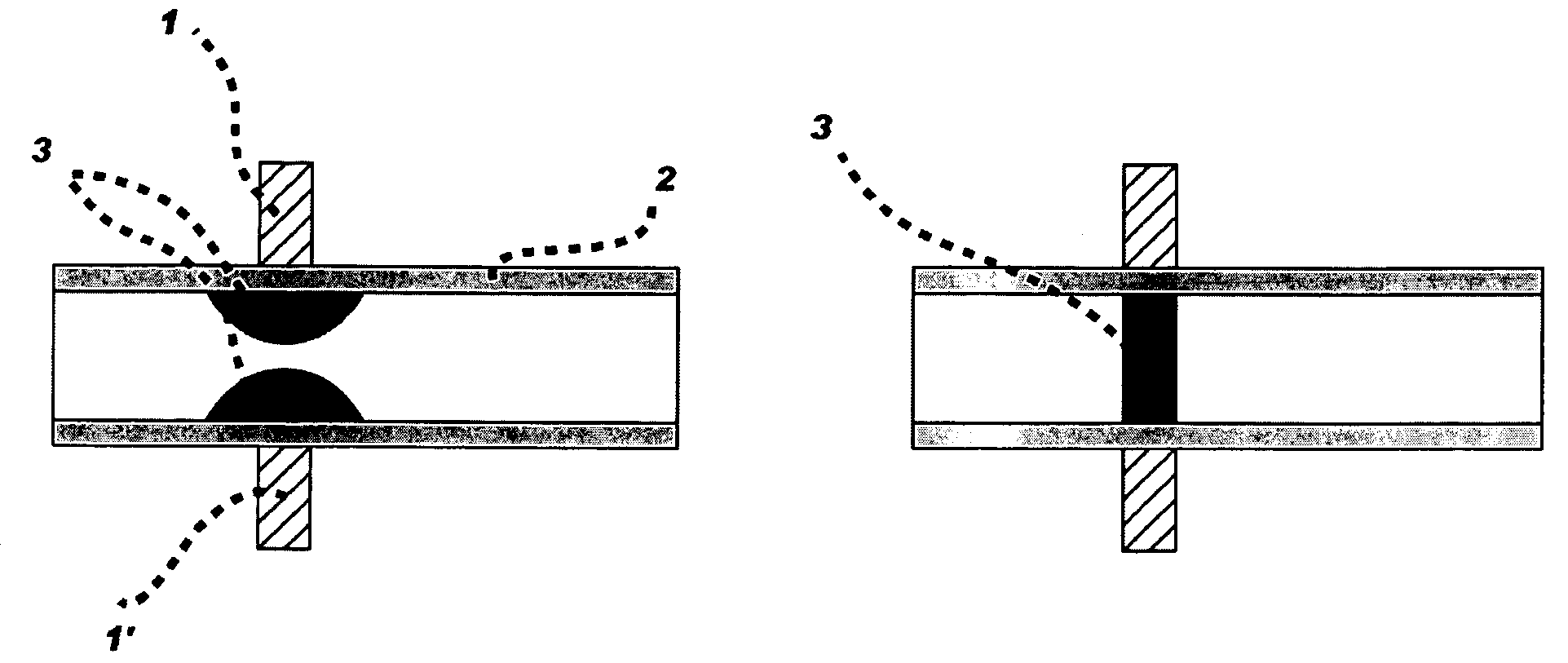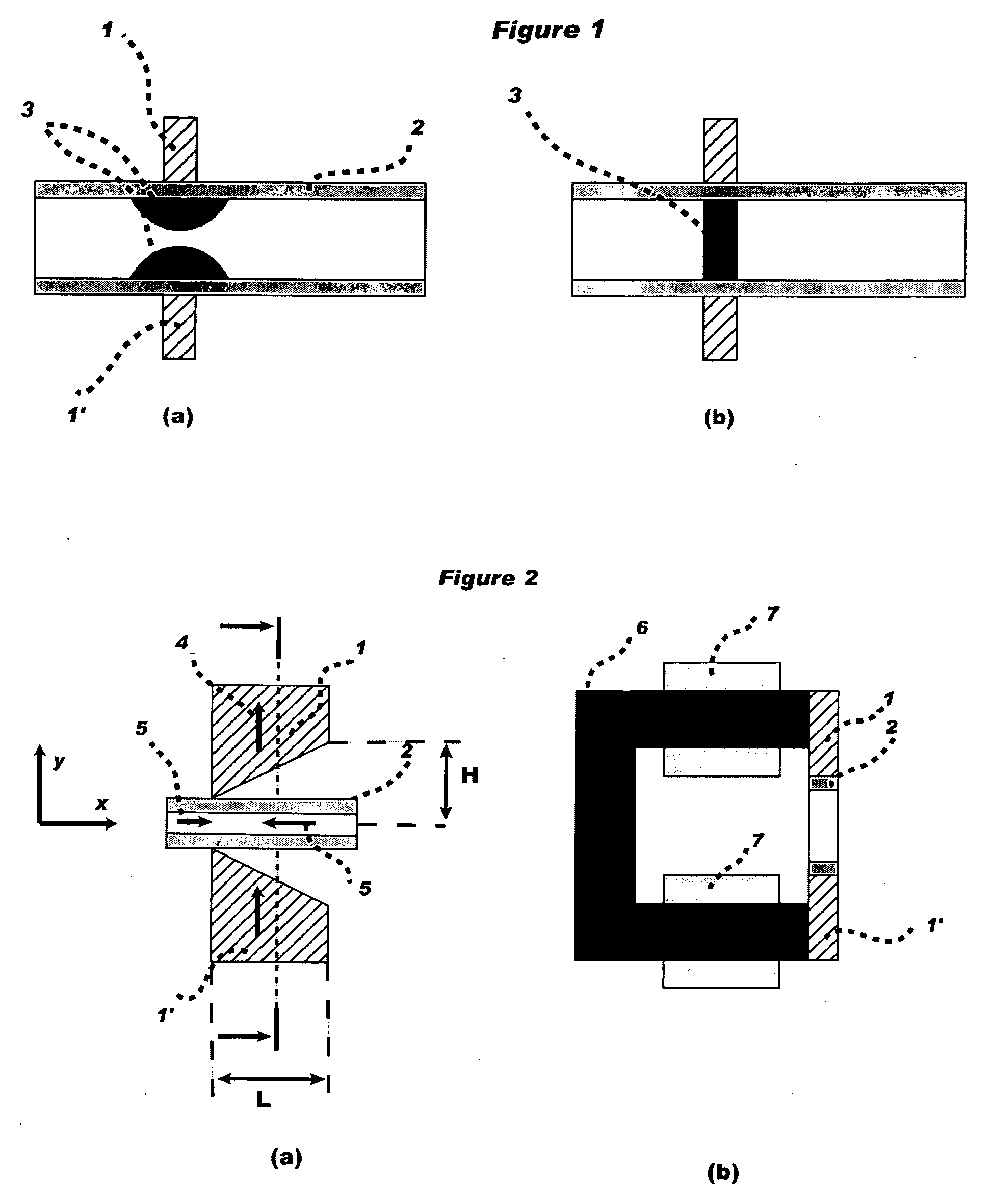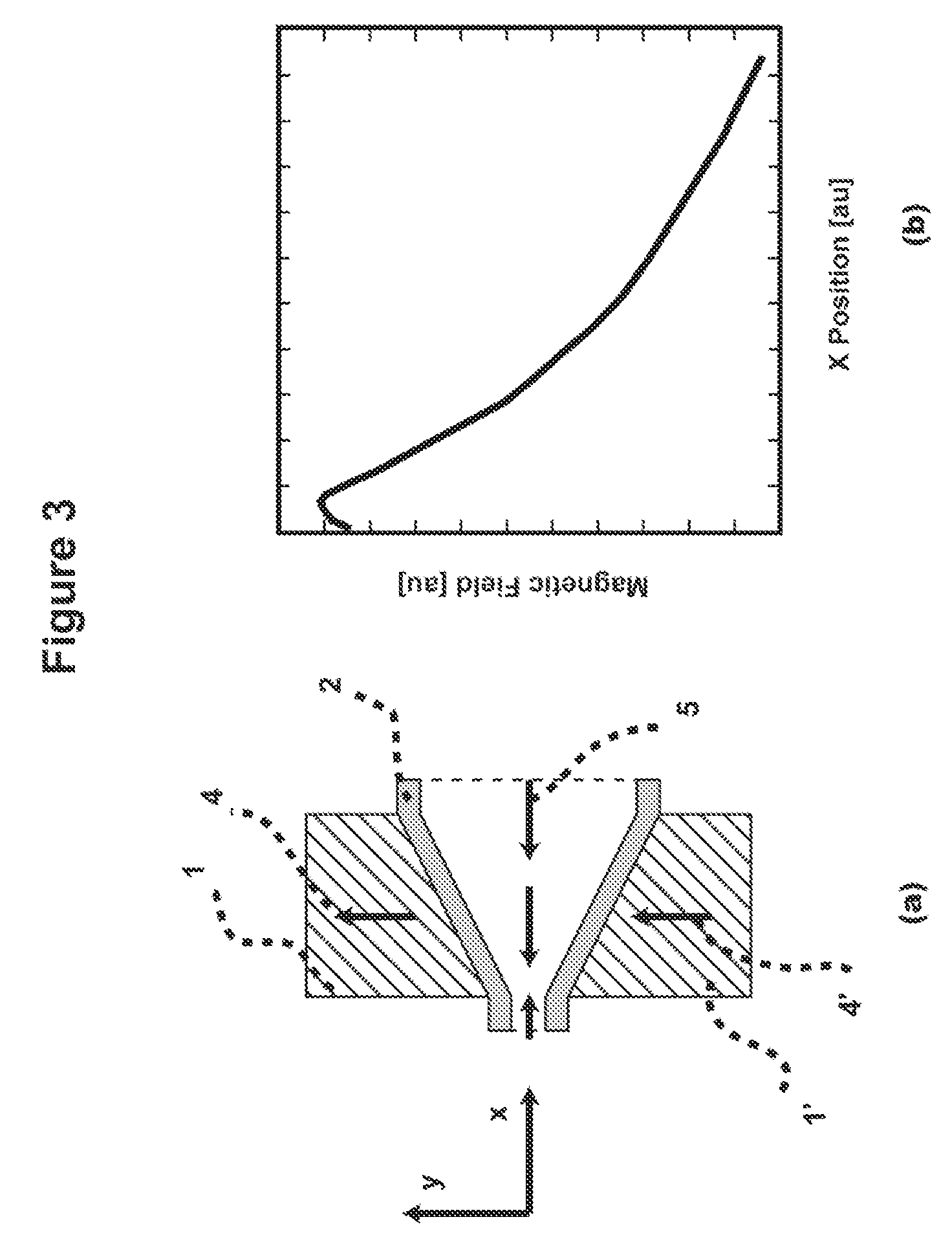Device and Method for Manipulating and Mixing Magnetic Particles in a Liquid Medium
- Summary
- Abstract
- Description
- Claims
- Application Information
AI Technical Summary
Benefits of technology
Problems solved by technology
Method used
Image
Examples
example 1
of Actuation Mechanism
[0110]The actuation sequences of FIG. 7, is an illustration on how the magnetic particles, while the magnetic poles are actuated using a time varied (amplitude and polarity) magnetic field, is used as a base sequence, can be moved following the combination of the magnetic field from each magnetic pole. During this movement the particles will substantially cover the whole reaction chamber volume as a fog of particles thereby assuring mixing. Although represented as “discontinuous” sequences, the sequences of the particles as shown in FIG. 7 can be achieved with a “rotating magnetic field” following the magnetic poles actuation sequences:
Pole 1 and 10′: B=B0 sin(ft)
Pole 1′ and 10: B=B0 sin(ft+π / 2) (3)
[0111]In equation (3) the base sequence actuation in each magnetic pole is an oscillating field while the actuation process is assured by a phase shift of π / 2 between the diagonally coupled magnetic poles. In this configuration the base and the sequence actuation fi...
example 2
of Actuation Mechanism
[0117]Equation (4) describes another actuation sequences to achieve mixing according to the invention.
Pole 1 and 10′: B=B0 sin(f1t)sin(f2t)
Pole 1′ and 10: B=B0 sin(f1t)sin(f2t+π / 2) (4)
[0118]In this sequence indeed the first oscillation component (sin(f1t)) is nothing more than the base actuation field at a frequency f1 of the magnetic poles while the second term defines the actuation sequence that moves the “fog” of particles in rotation form with a frequency f2. The sequence of equation (4) allows in particular to solve the previously reported (in the Example 1) agglomeration of particles in a low frequency rotating field of equation (3). For instance by rotating the particles as a frequency f2=1 Hz, the particles chains will break down due to the fast oscillation of the base field f1>10 Hz.
[0119]Example 3 of Actuation Mechanism
[0120]Equation (5) describes another actuation sequence to achieve mixing according to the invention, where the frequency of the rota...
example 4
of Actuation Mechanism
[0124]Although the previous examples are based on using “rotating magnetic field”, linear actuation sequence of particles fog can be also used to mix and reach an homogenous state. Typical example of that linear actuation mode can be achieved by first moving the particles to the out border as shown in FIG. 7(b) using the actuation sequence:
Pole 1 and 1′: B=B0 sin(ωt)
Pole 10 and 10′: B=B0 sin(ωt+π) (6)
[0125]At this stage the particles can be moved to the left corner (narrow part) of the reaction chamber by the sequence:
Pole 1 and 1′: B=B0 sin(ωt)
Pole 10 and 10′: B=B0 sin(ωt+ / 2) (7)
[0126]By symmetry a displacement toward the right corner (narrow part) of the reaction chamber can be achieved by the sequence:
Pole 1 and 1′: B=B0 sin(ωt+π / 2)
Pole 10 and 10′: B=B0 sin(ωt) (8)
[0127]A sequential shift between the previous three configuration following the sequences: (6)→(7)→(6)→(8) at a determined rate, one can achieve an homogenous mixing over the time.
[0128]In pract...
PUM
 Login to View More
Login to View More Abstract
Description
Claims
Application Information
 Login to View More
Login to View More - R&D
- Intellectual Property
- Life Sciences
- Materials
- Tech Scout
- Unparalleled Data Quality
- Higher Quality Content
- 60% Fewer Hallucinations
Browse by: Latest US Patents, China's latest patents, Technical Efficacy Thesaurus, Application Domain, Technology Topic, Popular Technical Reports.
© 2025 PatSnap. All rights reserved.Legal|Privacy policy|Modern Slavery Act Transparency Statement|Sitemap|About US| Contact US: help@patsnap.com



